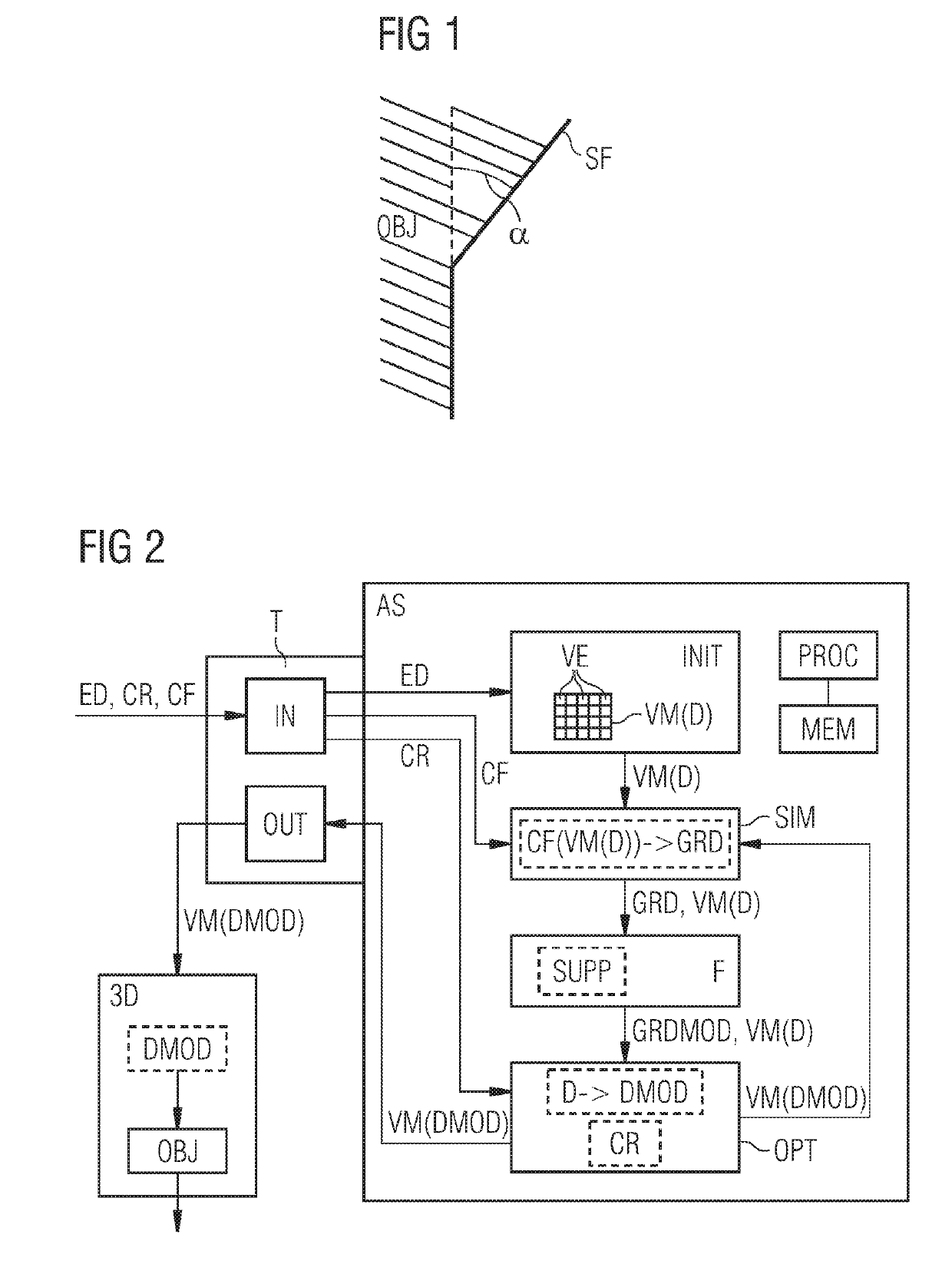Method, assistance system and 3d-printer for computer-aided design of objects for additive manufacturing
a technology of computer-aided design and additive manufacturing, applied in the field of computer-aided design of objects for additive manufacturing, can solve the problems of affecting the optimization of the total mass or the total volume, requiring considerable additional effort, and special to additive manufacturing, and is normally not automatically factored
- Summary
- Abstract
- Description
- Claims
- Application Information
AI Technical Summary
Benefits of technology
Problems solved by technology
Method used
Image
Examples
Embodiment Construction
[0023]FIG. 1 illustrates an overhanging lateral face SF of an object OBJ to be additively manufactured, e.g. to be printed by a 3D printer. The overhang angle α in this instance refers to an angle of the object surface SF in relation to the perpendicular. As already mentioned above, if the overhang angle α is too large, supporting structures additionally need to be added before printing and removed again after printing. While an overhang angle α of less than 45° is frequently acceptable, an overhang angle α of more than 45° can require additional supporting structures to be added.
[0024]FIG. 2 shows an assistance system AS for designing an object OBJ to be additively manufactured and a 3D printer 3D for printing the designed object OBJ. The assistance system AS has one or more processors PROC configured to perform all the method steps of the assistance system AS and / or to perform program instructions for performing these method steps. Furthermore, the assistance system AS has one or ...
PUM
 Login to View More
Login to View More Abstract
Description
Claims
Application Information
 Login to View More
Login to View More - R&D
- Intellectual Property
- Life Sciences
- Materials
- Tech Scout
- Unparalleled Data Quality
- Higher Quality Content
- 60% Fewer Hallucinations
Browse by: Latest US Patents, China's latest patents, Technical Efficacy Thesaurus, Application Domain, Technology Topic, Popular Technical Reports.
© 2025 PatSnap. All rights reserved.Legal|Privacy policy|Modern Slavery Act Transparency Statement|Sitemap|About US| Contact US: help@patsnap.com


